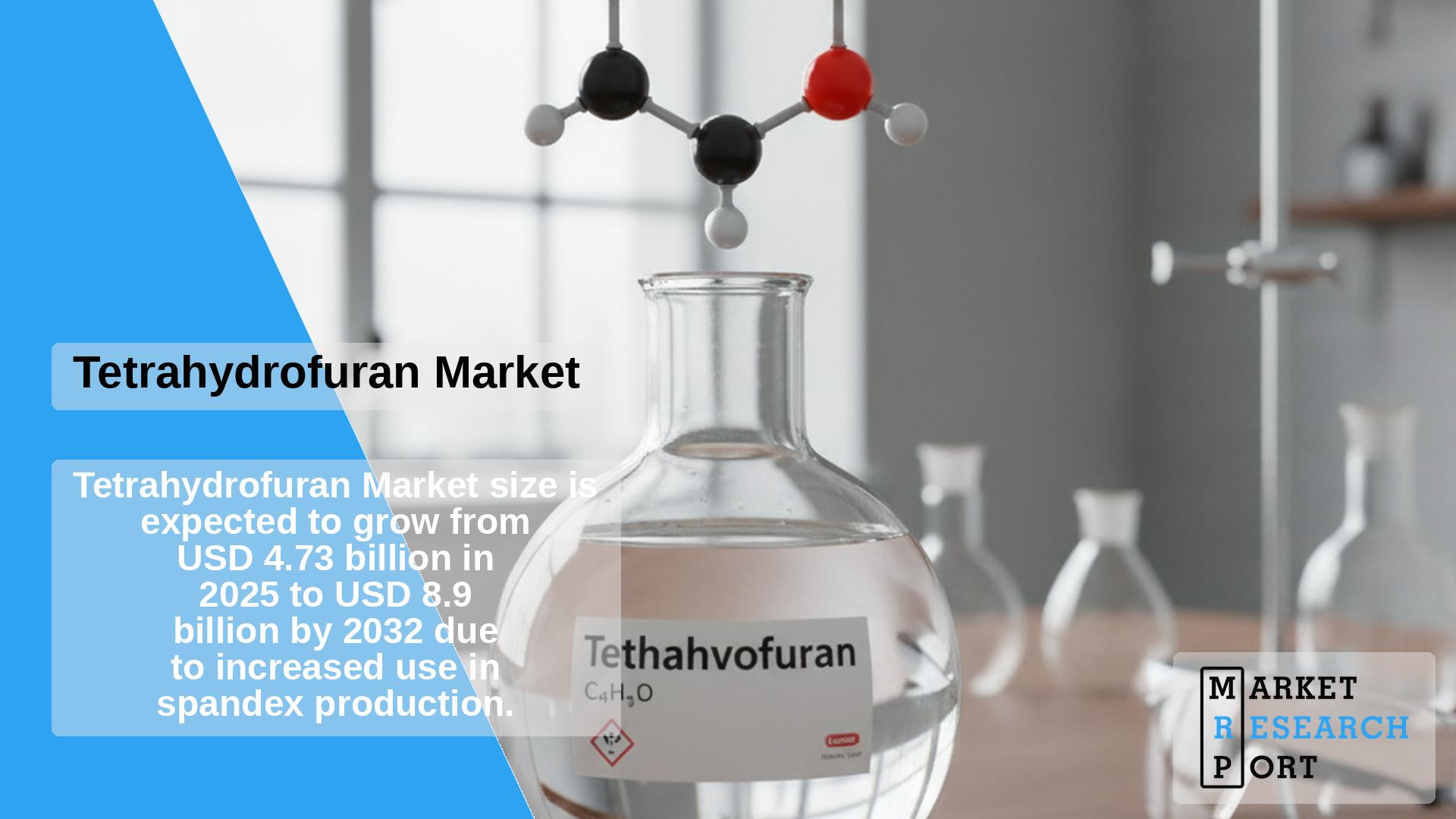
The global tetrahydrofuran (THF) market size was valued at USD 4.73 billion in 2025 and is forecasted to grow at a compound annual growth rate (CAGR) of 6.6% from 2025 to 2032, reaching approximately USD 8.9 billion. The rising production of polytetramethylene ether glycol (PTMEG), a primary raw material for spandex fabric, is a key growth driver. The growing demand for stretchable and sports apparel fabrics has significantly increased requirements for THF over the forecast period. Additionally, THF’s versatile solvent properties and ability to contribute to high-performance polymer production maintain strong demand across multiple industries.
THF’s extensive use as an industrial solvent, especially for dissolving both polar and non-polar compounds, plays a pivotal role in sectors such as pharmaceuticals, PVC cement, and coatings. A shift toward bio-based THF derived from renewable resources is fostering growth opportunities in response to environmental concerns and regulatory pressures against petroleum-based products. However, the flammability and health risks related to THF necessitate strict safety handling, which can limit its application in certain contexts.
The Reppe process remains the dominant industrial synthesis method for THF, accounting for over 64% share as of 2025. This process provides high-purity THF necessary for stringent applications such as pharmaceuticals and electronics. Alternatively, the Davy process, involving the cyclization of 1,4-butanediol, offers cost-effective scalability and is favored for large-scale manufacturing.
PTMEG production is the largest application segment, representing more than 61% of total THF consumption in 2025. PTMEG’s applications in spandex fibers, polyurethane elastomers, and copolyesters enrich textiles with elasticity, durability, and chemical resistance. THF’s solvent applications also remain crucial in pharmaceuticals, adhesives, and coatings due to its effective dissolving capability leading to improved product quality and efficient manufacturing.
Asia Pacific dominates the THF market with over 60% revenue share, propelled by expanding textile, pharmaceutical, and automotive sectors in China, India, and other manufacturing hubs. North America exhibits steady growth driven by technological advancements and stringent environmental standards, with the U.S. leading regional contributions. Europe’s commitment to renewable resources and regulatory support bolsters its THF market expansion.
| Market size, 2025 | USD 4.73 billion |
| Revenue forecast, 2032 | USD 8.9 billion |
| CAGR | 6.6% (2025-2032) |
| Base year for estimation | 2024 |
| Historical data | 2018 – 2023 |
| Forecast period | 2025 – 2032 |
| Quantitative units | Volume (kilotons), revenue (USD billion), CAGR |
| Report coverage | Volume forecast, revenue forecast, industry drivers, competitive landscape, trends |
| Segments covered | Technology, application, region |
| Regional scope | North America; Europe; Asia Pacific; Central & South America; Middle East & Africa |
| Country scope | U.S.; Canada; Mexico; Germany; UK; Russia; China; India; Japan; South Korea; Brazil; GCC; South Africa |
| Key companies profiled | Ashland Inc.; Banner Chemicals Limited; BASF; BioAmber; Dairen Chemical; INVISTA; LyondellBasell; Nova Molecular Technologies; Sipchem |